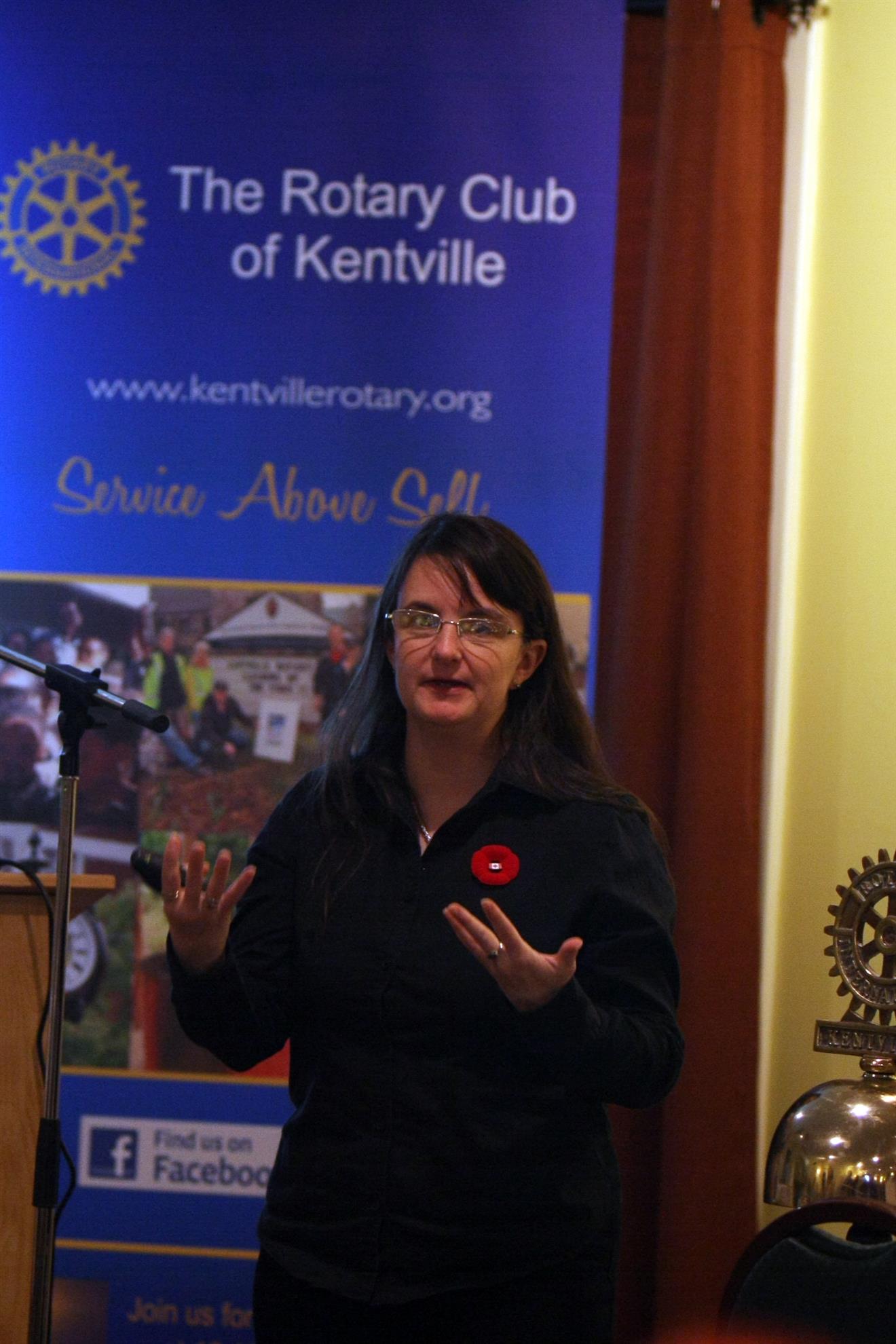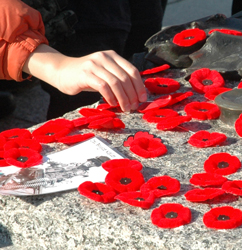What did you miss November 6, 2017
Chair: Al Mutch
O’Canada: Doug Hill
Grace: Doug Hill
Guests: Ellen Stoddard – Leah White
Kaharia Khatib – Leah White
Brian Crossman – Martha MacQuarrie
Justine MacDonald – Guest Speaker
Marie – Exchange Student
Anya – Exchange Student
Tony Stephenson (former Member)
Visiting Rotarians: Greg White – New Minas Sunrise
Happy Dollars:
Brian Smith – Movember and is growing a mustache celebrating surviving prostrate Cancer.
Kimberley Monette - was very pleased with her company receiving an award for the Valley’s Outstanding Business.
Larry Stillwell – pleased for having enjoyed a Coldbrook Lions Club Murder Mystery Diner on Saturday and the Buffy St. Marie concert Sunday evening at Acadia.
Heather Lohr – Happy to reach the Freedom 55 level. She is celebrating by taking Anya and and Marie to Halifax to shop.
Jake Eelman happy that is starting his dream of starting his own Vineyard
Sue Ueffing happy that she had a great trip to Holland.
Presidents Report:
.jpg)
Shelly welcomed our guests, reminded people about the reception on the 11th at Elva’s, a reminder of the Club dinner theatre on the 22nd, the annual General Meeting on Dec. 11th. We had a show of hands for those planning on attending the meeting on the 13th and expressed best wishes and Happy Birthdays to Carl, Walley, Shelley, Roxanne,Phil, Chris, Rod and Fred Walsh.
We were please to welcome Tony back following a bout with cancer and sorry to hear about Phyllis recent loss of her mother.
Guest Speaker: Justine MacDonald who hails from Alberta and is a wonderful Photographer working at Kingstec. Justine has had two opportunities to visit Vimy Ridge and shared her experience from the most recent trip to France and the impact on Canadian history.

.png)
The Canadian National Vimy Memorial is a war memorial site in France dedicated to the memory of Canadian Expeditionary Force members killed during the First World War. It also serves as the place of commemoration for Canadian soldiers of the First World War killed or presumed dead in France who have no known grave. The monument is the centrepiece of a 100-hectare (250-acre) preserved battlefield park that encompasses a portion of the ground over which the Canadian Corps made their assault during the initial Battle of Vimy Ridge offensive of the Battle of Arras.
The Battle of Vimy Ridge was the first occasion on which all four divisions of the Canadian Expeditionary Force participated in a battle as a cohesive formation, and it became a Canadian national symbol of achievement and sacrifice. This battle is Canada’s most celebrated military victory - an often mythologized symbol of the birth of Canadian national pride and awareness.
.png)
Vimy Ridge is an unusually prominent, nine-kilometre-long escarpment rising amid the open countryside north of the town of Arras. To the north and east of the ridge are the Douai plain and the important coal mining city of Lens – in 1917 both were occupied by Germany. To the west and south were the British lines and unoccupied France. German forces had been entrenched on the heights of the ridge since nearly the beginning of the war in 1914, despite several attempts to dislodge them. More than 100,000 French soldiers had been killed and wounded in previous efforts to recapture the ridge.
.png)
France ceded to Canada perpetual use of a portion of land on Vimy Ridge on the understanding that Canada use the land to establish a battlefield park and memorial. Wartime tunnels, trenches, craters, and unexploded munitions still honeycomb the grounds of the site, which remains largely closed off for reasons of public safety. Along with preserved trench lines, several other memorials and cemeteries are contained within the park.
Although the battle is not generally considered Canada's greatest military achievement, the image of national unity and achievement imbued the battle with considerable national significance for Canada. According to Pierce, "the historical reality of the battle has been reworked and reinterpreted in a conscious attempt to give purpose and meaning to an event that came to symbolize Canada's coming of age as a nation." The idea that Canada's identity and nationhood were born out of the battle is an opinion that is widely held in military and general histories of Canada. The battle was the largest territorial advance of any Allied Force to that point in the war – but it would mean little to the outcome of the conflict. More than 10,500 Canadians were killed and wounded in the assault. Today an iconic white memorial atop of the ridge honours the 11285 Canadians killed in France throughout the war who have no known graves. The trip to France included wearing red jackets and throughout Justines’s trip the people encountered were extremely hospitable and welcomed Canadians openly. They obviously were Canadian and even encountered some friendly Australians who discussed the Memorial as well as the poem In Flanders Field by John McCrae.
Walley Jarvis thanked Justine on behalf of the Club for the informative presentation.
Closing: We joined together in a Moment of Silence in Memory of those who have served to protect us and those that have paid the supreme sacrifice for all Canadians.
